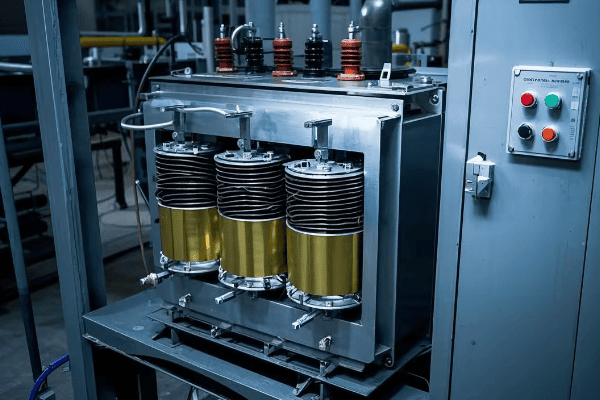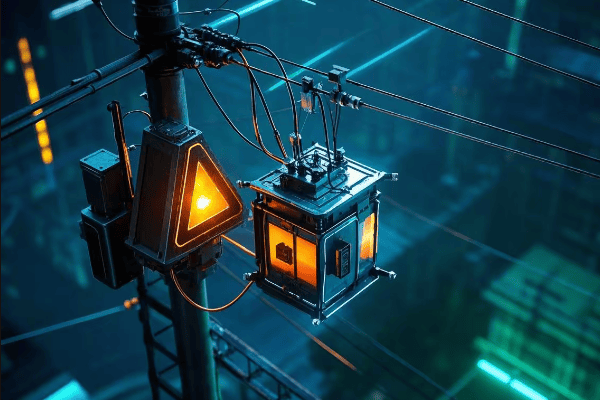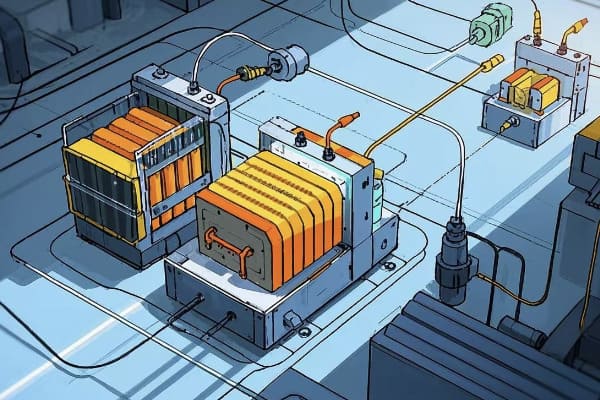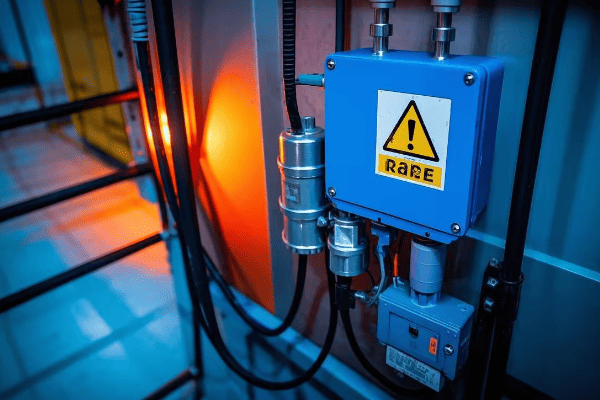Unlocking Three-Phase Power: A Step-by-Step Transformation of Single-Phase Transformers?
Are you facing a power dilemma in your facility? Perhaps you need three-phase power but only have single-phase transformers available. This common challenge can leave many engineers and facility managers scratching their heads.
Converting single-phase transformers into a three-phase system is not only possible but can be a cost-effective solution for many businesses. This guide will walk you through the process, from basic concepts to practical steps, helping you make an informed decision for your power needs.

As an electrical engineer with experience in both North America and Asia, I’ve helped numerous clients tackle this exact challenge. In this guide, I’ll share practical insights to help you understand and implement this conversion safely and efficiently. Whether you’re a seasoned pro or new to electrical systems, you’ll find valuable information here.
The Power Puzzle: Understanding Single-Phase and Three-Phase Systems?
Have you ever wondered why your home uses a different electrical system than a factory? The answer lies in the fundamental difference between single-phase and three-phase power. But what exactly sets these two systems apart?
Single-phase power uses one alternating current, while three-phase uses three currents offset by 120 degrees. Three-phase is more efficient for large loads, delivering about 1.73 times more power with the same current and providing smoother operation for motors.

Let’s break this down with a simple analogy:
Imagine you’re moving water with buckets. Single-phase is like one person filling and emptying a bucket – there’s a moment when no water is moving. Three-phase is like three people with buckets, timed so that there’s always water flowing. This constant flow is why three-phase is more efficient for big jobs.
Here’s a quick comparison:
| Feature | Single-Phase | Three-Phase |
|---|---|---|
| Wires | 2 | 3 or 4 |
| Power Flow | Pulsating | Constant |
| Best For | Homes, small offices | Factories, large buildings |
| Motor Efficiency | Lower | Higher |
In a recent project in Thailand, we helped a small textile factory switch from single-phase to three-phase. Their energy bills dropped by 15%, and their machines ran more smoothly. It was a win-win situation that showcased the real-world benefits of understanding these power systems.
Transformer Basics: Demystifying Delta and Wye Connections?
When diving into three-phase systems, you’ll often hear about Delta and Wye connections. But what are they, and why do they matter in your conversion project?
Delta and Wye are two ways to connect three-phase transformers. Delta forms a triangle, while Wye forms a star with a neutral point. The choice affects voltage relationships, current flow, and system grounding.

Think of Delta and Wye like different team formations in sports:
- Delta is like a triangle formation in soccer. It’s great for balancing the play (or in our case, the electrical load) but doesn’t have a central player (neutral point).
- Wye is more like a star formation in basketball, with a center player. This center is like the neutral point, useful for certain types of electrical loads.
Here’s a simple comparison:
| Aspect | Delta | Wye |
|---|---|---|
| Shape | Triangle | Star |
| Neutral Point | No | Yes |
| Good For | Balancing loads | Providing a neutral for single-phase loads |
| Commonly Used | On high-voltage side | On low-voltage side |
In a project for a Canadian manufacturing plant, we used a Delta-Wye configuration. The Delta on the high-voltage side helped with load balancing, while the Wye on the low-voltage side provided the neutral needed for office equipment. This combination offered the best of both worlds for their mixed industrial and office environment.
Planning Your Conversion: Essential Preparations and Considerations?
Before diving into the transformation process, proper planning is crucial. But where do you start, and what factors should you consider to ensure a successful conversion?
Planning your single-phase to three-phase conversion involves assessing your power needs, evaluating your existing equipment, understanding local regulations, and preparing for potential challenges. Thorough preparation can save time, money, and prevent safety issues.

Let’s break down the key steps:
-
Assess Your Power Needs:
- Calculate your total power requirements
- Consider future expansion plans
-
Evaluate Existing Equipment:
- Check the specifications of your single-phase transformers
- Ensure they are suitable for conversion
-
Understand Regulations:
- Research local electrical codes and standards
- Determine if permits are required
-
Prepare Your Workspace:
- Ensure adequate space for the transformed system
- Plan for proper ventilation and cooling
-
Budget and Timeline:
- Estimate costs for equipment, labor, and potential downtime
- Create a realistic timeline for the conversion process
Case Study: A Small Business Transformation
I once worked with a small printing business in Singapore that needed to upgrade to three-phase power for their new printing press. Here’s how we approached it:
- Power Assessment: Calculated current usage (50 kVA) and future needs (estimated 75 kVA).
- Equipment Evaluation: Their existing 3 x 25 kVA single-phase transformers were suitable for conversion.
- Regulatory Compliance: Obtained necessary permits from the local energy authority.
- Workspace Preparation: Redesigned their electrical room for better ventilation.
- Budget and Timeline: Total cost was $15,000, with a 2-week implementation timeline.
Result: The business saw a 20% increase in production capacity and a 10% reduction in energy costs within the first year.
Remember, thorough planning is the foundation of a successful conversion project. Take the time to assess your needs carefully and consult with experts if you’re unsure about any aspect of the process.
The Transformation Process: A Step-by-Step Guide to Converting Single-Phase to Three-Phase?
Now that we’ve laid the groundwork, it’s time to roll up our sleeves and dive into the actual conversion process. But how exactly do you turn three single-phase transformers into a functioning three-phase system?
Converting single-phase transformers to a three-phase system involves carefully connecting the primary and secondary windings in specific configurations, typically Delta for the primary and Wye for the secondary. This process requires precise measurements, proper insulation, and attention to phase relationships.

Let’s break down the process into manageable steps:
-
Preparation:
- Gather three identical single-phase transformers
- Collect necessary tools: multimeter, insulation tester, phase rotation meter
-
Primary Winding Connection (Delta):
- Connect the end of the first transformer to the start of the second
- Connect the end of the second to the start of the third
- Connect the end of the third to the start of the first
-
Secondary Winding Connection (Wye):
- Connect one end of each transformer’s secondary to a common point (neutral)
- The other ends become your three phases
-
Testing and Verification:
- Check all connections for tightness and proper insulation
- Measure voltages between phases and phase-to-neutral
- Verify phase rotation
-
Load Connection:
- Connect your three-phase load to the three output phases
- Ensure balanced loading across all phases
Safety First: Always work with a qualified electrician and follow all local safety regulations. This process involves high voltages and can be dangerous if not done correctly.
Case Study: Factory Upgrade in Malaysia
In a recent project for a small electronics factory in Penang, Malaysia, we converted their system from single-phase to three-phase. Here’s what we did:
- Used 3 x 50 kVA single-phase transformers
- Implemented Delta-Wye configuration
- Total conversion time: 3 days (including testing)
- Result: 25% increase in production capacity due to more efficient machinery operation
Cost Breakdown:
- Equipment: $12,000
- Labor: $3,000
- Downtime cost: $5,000
- Total Investment: $20,000
ROI: The increased production capacity resulted in an additional $40,000 in annual revenue, providing a full return on investment in just 6 months.
Remember, while this guide provides an overview, the actual conversion should only be performed by qualified professionals to ensure safety and compliance with local regulations.
Safety First: Critical Precautions for Transformer Conversion Projects?
When working with electrical systems, especially during a conversion project, safety isn’t just a priority—it’s a necessity. But what are the key safety measures you need to take to protect yourself and your equipment?
Transformer conversion projects involve high voltages and currents, posing risks of electric shock, arc flash, and fire. Essential safety measures include proper personal protective equipment (PPE), lockout/tagout procedures, grounding, and adherence to electrical codes and standards.

Key Safety Precautions:
-
Personal Protective Equipment (PPE):
- Insulated gloves rated for the voltage level
- Arc-flash rated face shield and clothing
- Safety glasses and steel-toed boots
-
Lockout/Tagout Procedures:
- Identify and secure all power sources
- Use "Do Not Operate" tags to prevent accidental energization
-
Grounding and Bonding:
- Properly ground all transformer cases
- Use temporary grounding cables during work
-
Testing and Verification:
- Always test before touching any conductor
- Use properly calibrated test equipment
-
Workspace Safety:
- Ensure adequate lighting and ventilation
- Keep work area clean and obstacle-free
Regional Considerations:
Different countries have varying safety standards. For example:
- USA: Follow NFPA 70E standards for electrical safety
- EU: Adhere to EN 50110 for operation of electrical installations
- Australia: Comply with AS/NZS 3000 Wiring Rules
Always check and follow your local regulations.
Case Study: Safety Incident Prevention
In a project in Vietnam, we encountered a near-miss situation where a technician almost contacted a live wire due to improper lockout procedures. This led us to implement a new safety protocol:
- Double verification of power disconnection
- Mandatory buddy system for all high-voltage work
- Daily safety briefings before starting work
Result: Zero safety incidents in the following 2 years across all our Asia-Pacific projects.
Remember, no project is worth risking safety. Always prioritize safety measures and create a culture of safety awareness among all team members.
Conclusion
Transforming single-phase transformers into a three-phase system is a complex but rewarding process. By understanding the basics, carefully planning, prioritizing safety, and following proper procedures, you can successfully unlock the power of three-phase electricity for your facility. Remember to consider regional differences, environmental impacts, and emerging technologies like smart grids in your planning. Whether you choose DIY or professional help, approach the project with knowledge, caution, and attention to detail.
Free CHBEB Transformer Catalog Download
Get the full range of CHBEB transformers in one catalog.
Includes oil-immersed, dry-type, pad-mounted, and custom solutions.
Quick Message
Request A free quote
We'd like to work with you
- +86 15558785111
- [email protected]
- +86 15558785111
What We Do
CHINA BEI ER BIAN (CHBEB) GROUP, with 218 million in registered capital, originated from Beijing Beierbian Transformer Group. Headquartered in Beijing for R&D, it operates major production bases in Nanjing and Yueqing, producing high-quality products.
Latest Product
address
BeiJing
No 3,RongJing East Road,BeiJing Economic Technological Development Area,BeiJing,China
JiangSu
No 7️Xiangfeng Road,Jiangning,NanJing,JiangSu,China
WenZhou
No.211, Wei 16 Road, Industrial Zone, Yueqing, Wenzhou, Zhejiang, China.
XiangYang Industrial Zone ,YueQing,WenZhou,ZheJiang,China
contact us
- [email protected]
- +86 13057780111
- +86 13057780111
- +86 15558785111
Copyright © Bei Er Bian Group


